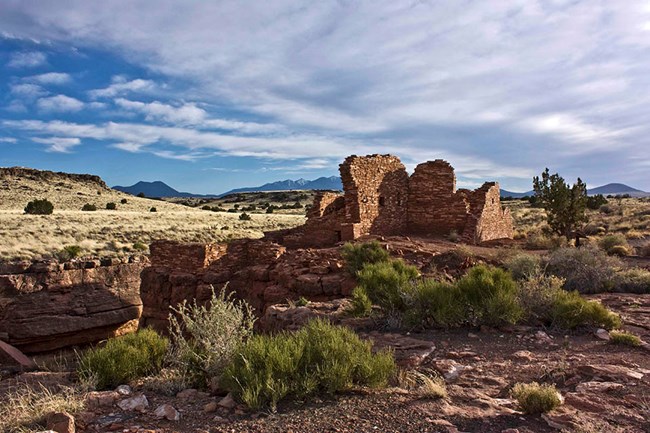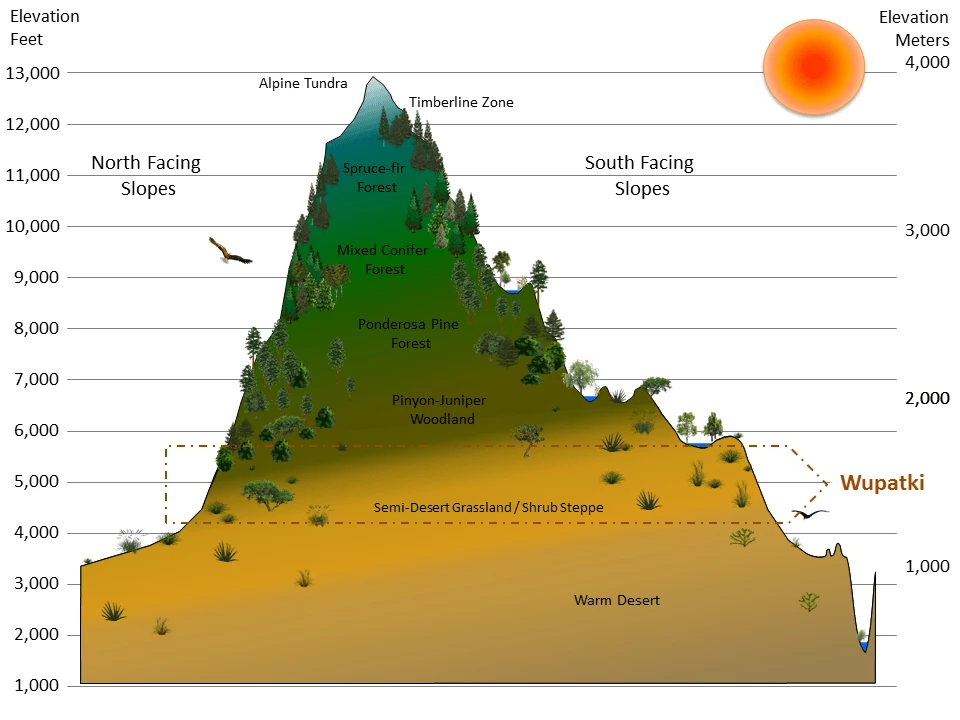
NPS
Wupatki National Monument encompasses 14,350 hectares in north-central Arizona, near Flagstaff and directly west of the Little Colorado River and the Navajo Reservation. It was established on December 9, 1924 by President Calvin Coolidge to preserve several prehistoric pueblos with standing architecture. Wupatki NM is the only known area in the southwestern U.S. where physical evidence from at least three archeologically separate Ancestral Puebloan cultures is found together in a number of archeological sites. Historic Navajo and Anglo ranch sites are also present at the monument.
Twenty-two plant community types have been documented at Wupatki NM. The most dominant types are pinyon-juniper woodland and savanna, grasslands, and desert scrub communities. The monument also supports 145 bird, 46 mammal, and 19 reptile species. Surface water resources in Wupatki include the Little Colorado River, several springs, washes, and arroyos.
Select a Park:
Select a Species Category (optional):
Visit NPSpecies for more comprehensive information and advanced search capability. Have a suggestion or comment on this list? Let us know.
Life Zones
Wupatki NM ranges in elevation from 4,277 to 5,720 feet (1,304–1,744 m) and contains both the Pinyon-Juniper Woodland and Semi-Desert Grassland /Shrub Steppe life zones. The monument experiences an average annual precipitation of 8.2 inches (209 m).

Climate Summary Chart
Charts are an effective way to summarize and graphically represent climate variables. The following chart is based on the diagrams developed for vegetation studies by Walter and Lieth in 1967. Visit our climate page for more information.

Reports & Publications
Inventories are point-in-time surveys that help us learn about the resources in our parks. Information obtained through the Southern Colorado Plateau Network’s inventories of park resources helped to establish a base level of data, which has served as a starting point for our natural resource monitoring.
Source: NPS DataStore Saved Search 3515 (results presented are a subset). To search for additional information, visit the NPS DataStore.
Source: NPS DataStore Saved Search 3471 (results presented are a subset). To search for additional information, visit the NPS DataStore.
Source: NPS DataStore Saved Search 3280 (results presented are a subset). To search for additional information, visit the NPS DataStore.
Last updated: October 21, 2022
